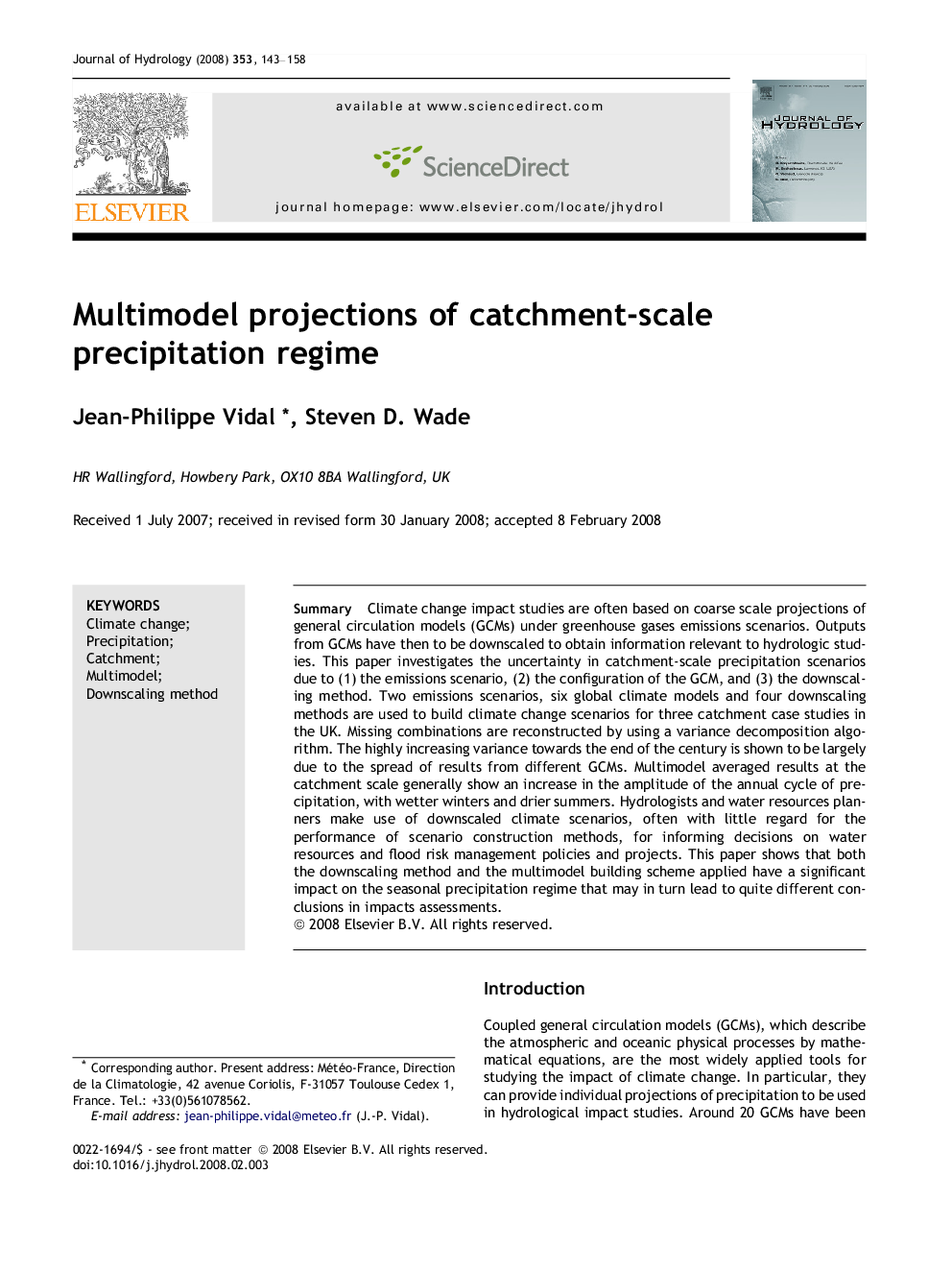| Article ID | Journal | Published Year | Pages | File Type |
|---|---|---|---|---|
| 4579346 | Journal of Hydrology | 2008 | 16 Pages |
SummaryClimate change impact studies are often based on coarse scale projections of general circulation models (GCMs) under greenhouse gases emissions scenarios. Outputs from GCMs have then to be downscaled to obtain information relevant to hydrologic studies. This paper investigates the uncertainty in catchment-scale precipitation scenarios due to (1) the emissions scenario, (2) the configuration of the GCM, and (3) the downscaling method. Two emissions scenarios, six global climate models and four downscaling methods are used to build climate change scenarios for three catchment case studies in the UK. Missing combinations are reconstructed by using a variance decomposition algorithm. The highly increasing variance towards the end of the century is shown to be largely due to the spread of results from different GCMs. Multimodel averaged results at the catchment scale generally show an increase in the amplitude of the annual cycle of precipitation, with wetter winters and drier summers. Hydrologists and water resources planners make use of downscaled climate scenarios, often with little regard for the performance of scenario construction methods, for informing decisions on water resources and flood risk management policies and projects. This paper shows that both the downscaling method and the multimodel building scheme applied have a significant impact on the seasonal precipitation regime that may in turn lead to quite different conclusions in impacts assessments.
